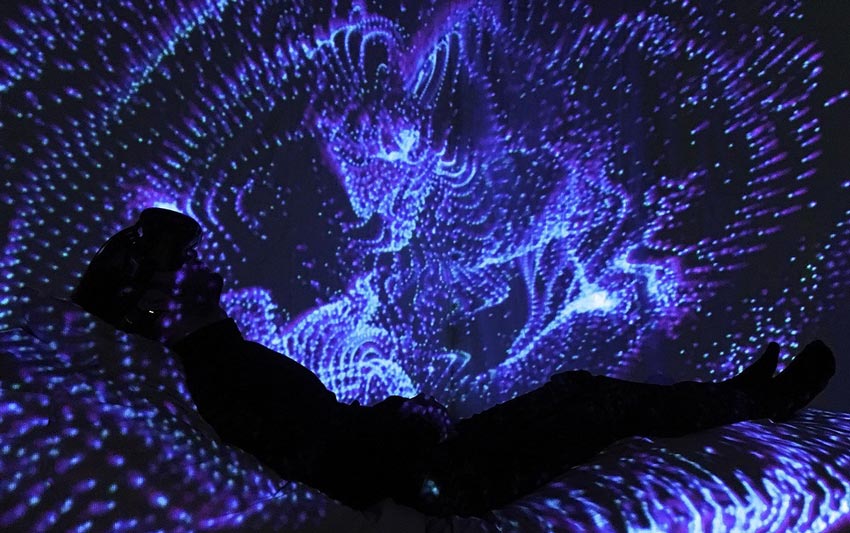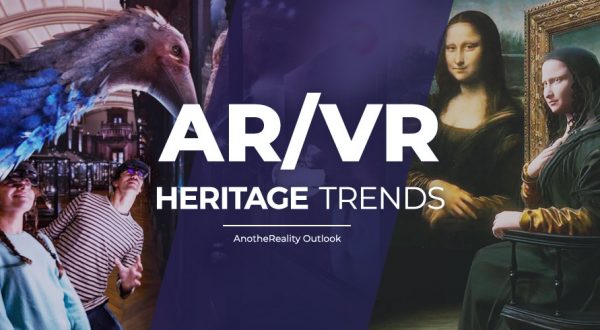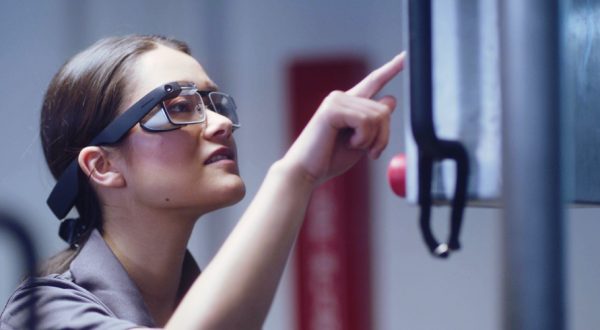Virtual Reality and Neurofeedback Merge with Art in a VR Experience Aimed at Improving Sleep Quality — Ambient music, an EEG neurofeedback system (electroencephalography, which records brain electrical activity), kaleidoscopic images, and a VR headset: these are the elements of the Inter-Dream project, an interactive bed created by PluginHUMAN.
It is scientifically proven that poor sleep is a concerning and increasingly prevalent problem for overall human health. Despite this awareness, research and projects aimed at improving sleep quality are relatively underexplored.
In light of this gap, Dr. Betty Sargeant and Justin Dwyer have demonstrated how combining art, science, and technology can lead to projects that have the potential to benefit human rest. They officially presented the analysis of physiological and psychological data in Glasgow at the CHI 2019 (Conference on Human Factors in Computing Systems), showcasing the intersection of art and technology.
INTER-DREAM | VIRTUAL REALITY AND NEUROFEEDBACK
The immersive multisensory experience created by the Australian artist duo combines two main aspects:
- Visual aspect: It consists of kaleidoscopic images visible through a VR headset, which are generated and controlled by the user’s brainwaves via EEG and neurofeedback.
- Auditory aspect: Ambient music controlled by the artists guides the mood and emotional state of the person throughout different phases of the experience.
Each individual will have a unique and non-replicable experience. What is shown inside the VR headset is guided by the individual’s brain activity: each brainwave frequency detected by the EEG is assigned a different color, and the intensity of the waves is linked to visual movements.

INTER-DREAM | RESULTS
People who sleep well are generally more relaxed and positive, while those who have poor sleep are more likely to experience stress and focus on worries. So far, nothing new.
What not everyone knows is that good sleep is typically preceded by a characteristic set of specific cognitive and mood states, as well as physiological changes.
It makes sense, therefore, to infer that influencing or even controlling these cognitive mood states can help in the relaxation phase that precedes sleep, as validated and demonstrated by PhD researcher Natahan Semertzidis with the Exertion Games Laboratory at RMIT University.
The study sample of 12 participants who underwent the immersive experience reported:
- A 21% decrease in negative emotions
- A 55% decrease in feelings of fear
- An 8% increase in positive emotions
- A 13% increase in serenity
Virtual reality has once again demonstrated, through this application, that technology can be combined and integrated with art and science, becoming a key element in addressing “old” problems with innovative approaches. It even revolutionizes the notion of incompatibility between technology and sleep, as well as the conception of the human body itself.
“This experience allows us to see the human body not only as a simple input controller but rather enables people to experience the body as games,” says Professor Florian ‘Floyd’ Mueller, co-supervisor of Semertzidis. “For me, this is a beginning to facilitate a future that is closer to ‘play,’ particularly one in which we can experience rest and eventually even sleep as if it were a form of (digital) play.”
Neurofeedback technology combined with virtual reality has taken its first step towards providing concrete assistance in the field of sleep-related disorders and insomnia.
Want to learn more about the project?
Full academic paper here “Towards Understanding the Design of Positive Pre-sleep Through a Neurofeedback Artistic Experience“


